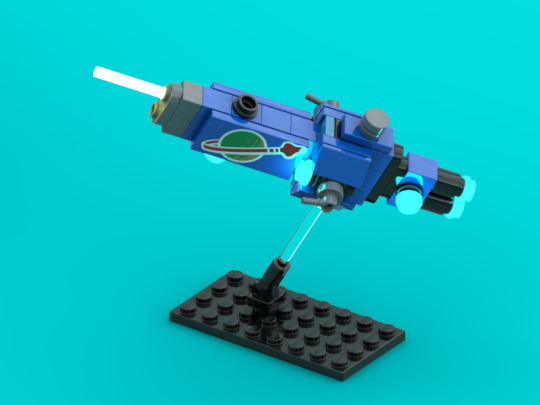#solar panel mounting structure
Explore tagged Tumblr posts
Text
Building a Greener Tomorrow with Solar Mounting Structures
Utkarsh India manufactures durable and precision-engineered solar panel mounting structure solutions using high-grade steel and advanced technology. With customised designs and strict quality standards, Utkarsh India ensures reliable support for diverse solar projects across India.
1 note
·
View note
Text
Immortal Metals

Website: https://immortalmetals.com/
Address: 10410 66th St N Unit 2, Pinellas Park, Florida 33781, USA
Immortal Metals, a family-owned business led by Travis and Adelyn, specializes in custom metal fabrication and welding. With over 18 years of experience, they offer a range of services for residential, commercial, and industrial needs, including custom metal structures, welding, machining solutions, and heavy machinery repair. Their commitment to quality craftsmanship and personalized service makes them a prominent choice in Pinellas County, Florida.
Facebook: https://www.facebook.com/immortalmetalswelding
Instagram: https://www.instagram.com/immortalmetalswelding/
Linkedin: https://www.linkedin.com/company/immortalmetals/
Keywords:
welding services near me
sheet metal fabrication near me
metal polishing near me
custom metal fabrication near me
solar panel structure
heavy equipment repair near me
custom metal fabrication
machinery repair services
solar panel mounting structure
custom sheet metal fabrication
sheet metal custom fabrication
metal polish service
welding repair services
custom machined parts
welding repair services near me
solar panel shade structure
welding inspection services
complete welding services
welding and fabrication services
professional welder near me
welding mobile services
industrial welding projects
quality custom metal fabrication
heavy machinery repair near me
custom metal art fabrication
solar panel base structure
custom welding services
commercial metal buildings near me
custom welding fabrication near me
metal building repair service
custom metal fabrication services
solar panel carport structure
welding consultancy services
custom welding solutions
custom metal box fabrication
solar panel frame structure
solar panel internal structure
metal door repair services
metal roof repair services
commercial metal shade structures
quality sheet metal fabrication
mil spec welding
custom arc welding services
custom metal fabrication pinellas park
custom works metal fabrication
welding and brazing services near me
machining solutions near me
metal door repair services near me
metal gate repair services
metal shear repair service near me
heavy equipment machinery repair
heavy machinery mobile repair
customized auxiliary welding solutions
machining solutions pinellas park
commercial metal buildings pinellas park
robotic machine fabrication near me
flame cutting services near
unique metal projects
metalwork for residential projects
metal drilling service near me
mil spec welding service price
heavy machinery and equipment repair near me
heavy machinery and equipment repair pinellas park
high quality steel structures service
custom welding rates
custom metal structures service
custom steelwork
#welding services near me#sheet metal fabrication near me#metal polishing near me#custom metal fabrication near me#solar panel structure#heavy equipment repair near me#custom metal fabrication#machinery repair services#solar panel mounting structure#custom sheet metal fabrication#sheet metal custom fabrication#metal polish service#welding repair services#custom machined parts#welding repair services near me#solar panel shade structure#welding inspection services#complete welding services#welding and fabrication services#professional welder near me#welding mobile services#industrial welding projects#quality custom metal fabrication#heavy machinery repair near me#custom metal art fabrication#solar panel base structure#custom welding services#commercial metal buildings near me#custom welding fabrication near me#metal building repair service
1 note
·
View note
Text
#Modular Solar Mounting Structure#modular solar mounting structure price#modular solar mounting structure in India#types of mounting structures for solar panels#solar panel mounting structure material#modular solar mounting structure cost
2 notes
·
View notes
Text
Best Solar Panel Mounting Structures in India
Get premium solar panel mounting structures designed for maximum efficiency and durability. We offer ground-mounted, rooftop, and custom solutions for residential, commercial, and industrial use. Our solar panel mounting structures ensure easy installation, long life, and optimized solar performance in any environment.

0 notes
Video
youtube
💪FIXDEX & GOODFIX steel structure connectors, high strength and rust-proof, a must-have for construction sites!
read more fastener product please visit our website :
Email: [email protected]
Web: www.fixdex.com
#youtube#Steel structure#steel buildings#steel buildings for sale#steel beam#general steel buildings#steel structures#steel structure buildings#steel building manufacturers#steel beam prices#steel construction#high quality steel structures#steel structures for sale#large steel building#solar bracket#solar panel brackets#solar panel mounting brackets#solar panel roof mounts#solar panel mounts#solar mounting brackets#solar panel fixing brackets#solar z brackets
0 notes
Text
The Critical Role of Mounting Structures in Solar Panel Installations
In the rapidly evolving solar energy industry, the success of a solar installation company often hinges on factors that might seem less glamorous than the panels themselves. Among these crucial elements, mounting structures for solar panels stand out as a fundamental component that can make or break a solar installation project. These essential frameworks not only provide stability and protection for expensive solar panels but also optimize their performance through proper positioning and orientation.
Understanding the Importance of Solar Panel Mounting Structures
Solar panel mounting structures serve as the backbone of any solar installation, providing the necessary support system that keeps panels securely in place for decades. A well-designed mounting structure must withstand various environmental challenges, including high winds, heavy snow loads, and thermal expansion, while maintaining the optimal angle for maximum solar energy capture.
Modern mounting solutions have evolved significantly from the early days of solar installations. Today's solar panel mounting structure options include:
Ground-mounted systems that allow for optimal positioning in open spaces
Roof-mounted solutions that maximize limited urban space
Tracking systems that follow the sun's movement throughout the day
Ballasted systems that avoid roof penetration
Building-integrated photovoltaic (BIPV) mounting solutions
Key Considerations for Mounting Structure Selection
For a solar installation company, selecting the appropriate mounting structure involves careful evaluation of multiple factors:
Structural Integrity: The mounting system must be engineered to support the weight of the solar panels while withstanding local weather conditions. This includes consideration of wind loads, snow loads, and seismic activity in the installation area.
Material Quality: High-grade aluminum and stainless steel components ensure longevity and durability. These materials offer excellent corrosion resistance and structural strength while keeping the overall weight manageable.
Installation Efficiency: Modern mounting systems are designed with quick-connect components and pre-assembled parts, reducing installation time and labor costs. This efficiency is crucial for maintaining competitive pricing in the solar market.
Roof Compatibility: When installing on rooftops, the mounting structure must be compatible with the existing roofing material and not compromise the roof's integrity or warranty. Different solutions exist for various roof types, including asphalt shingles, metal roofs, and flat commercial roofs.
The Impact on Solar Panel Performance
The mounting structure directly influences the performance and efficiency of solar panels. Proper mounting ensures:
Optimal Tilt Angle: Panels must be installed at the ideal angle based on the installation location's latitude to maximize solar energy capture throughout the year.
Ventilation: Adequate airflow around panels prevents overheating and maintains efficiency. Well-designed mounting structures incorporate sufficient spacing and elevation to promote natural cooling.
Load Distribution: Even weight distribution across the mounting points prevents stress on both the panels and the supporting structure, extending the system's lifespan.
Future Trends in Solar Panel Mounting
The solar industry continues to innovate in mounting structure design. Emerging trends include:
Smart Mounting Systems: Integration of sensors and monitoring capabilities within the mounting structure to track structural integrity and panel performance.
Lightweight Materials: Development of stronger yet lighter materials that reduce installation complexity and structural requirements.
Universal Compatibility: Mounting solutions that accommodate various panel sizes and types, providing flexibility for solar installation companies.
Best Practices for Solar Installation Companies
Successful solar installations require attention to detail in mounting structure selection and installation:
Conduct thorough site assessments to determine the most appropriate mounting solution
Ensure compliance with local building codes and regulations
Use certified mounting systems from reputable manufacturers
Provide proper training for installation teams
Maintain detailed documentation of mounting specifications and installation procedures
Conclusion
For any solar installation company, the choice of mounting structures for solar panels represents a critical decision that impacts both immediate project success and long-term system performance. By understanding the importance of proper mounting systems and staying current with industry developments, solar installers can ensure their projects deliver maximum value to clients while maintaining high safety and reliability standards.
The solar panel mounting structure serves as more than just a support system; it's an integral part of the entire solar energy solution. As the industry continues to grow and evolve, mounting systems will play an increasingly important role in making solar energy more accessible, efficient, and reliable for consumers worldwide.
0 notes
Text
Types of Hot Dip Galvanized Solar Structures : GI Square Pipes, GI Base Plates, GI Slotted Angles and more

Solar energy is a backbone of sustainable development, and robust infrastructure is required to harness it efficiently. Among the main components of a solar installation are the solar structures that support and stabilize the panels. At Parco Engineers, we specialize in high-quality, hot dip galvanized (HDG) solar structures designed for durability and performance. This blog explores the various types of galvanized solar structures, their uses, and the advantages they bring to solar installations.
Why Hot Dip Galvanized Solar Structures?
Hot dip galvanization is a process where steel is coated with zinc to prevent corrosion, making it ideal for solar structures exposed to harsh weather conditions. A solar panel structure endures years of environmental wear and tear, and galvanization ensures longevity and minimal maintenance.
Key Types of Hot Dip Galvanized Solar Structures
1. GI Square Pipes
Corrosion resistance due to the zinc coating.
High tensile strength to withstand strong winds and other environmental conditions.
Versatile design for both ground-mounted and rooftop solar panel structures.
At Parco Engineers, our GI square pipes come in various dimensions to meet the unique requirements of different solar projects.
Features and Benefits:
Galvanized square steel pipes are a fundamental component in solar mounting structures. These pipes provide exceptional strength and stability, making them ideal for framing and supporting structural solar panels.
2. GI Base Plates
Enhanced load-bearing capacity.
Corrosion-resistant surface for long-term use.
Easy installation and compatibility with various solar mounting designs.
Our steel base plates are precision-engineered for reliability and durability, ensuring your solar setup stands the test of time.
Advantages:
A base plate serves as the foundation for securing solar structures to the ground or rooftops. Made from high-quality galvanized steel, base plates ensure the stability of the entire installation.
3. GI Slotted Angles
Supporting smaller solar panel structures.
Creating flexible mounting configurations.
Securing additional components like inverters or batteries.
Their flexibility and ease of use make slotted angles a favorite choice among solar engineers and installers.
Applications:
GI slotted angles are another versatile component used in solar installations. They allow for adjustable connections and are commonly used in framing and mounting systems.
4. GI Round Bars
Superior corrosion resistance.
High strength-to-weight ratio.
Long lifespan, even in extreme weather conditions.
Why Choose GI Round Bars?
GI round bars, also known as galvanized round bars, are widely used for structural and reinforcement purposes in solar projects. These bars add strength and stability to the overall design.
5. Strut Channels and Unistrut Channels
The strut channels are otherwise known as unistrut channels, which provide essential mounting support to the solar panels. The strut channels can bear heavy loads and are quite flexible for mounting purposes.
Important Features:
Modular structure that allows for easy assembly
High corrosion resistance to withstand outdoor environments
Easy to fit in mounting brackets and other fittings.
Strut channels are particularly useful for commercial and industrial solar installations where adaptability is essential.
6. Custom Components
We also offer bespoke components at Parco Engineers:
Steel base plates for one-off mounting requirements
Specialty galvanized round bars for reinforcement
Customized solar panel structures that are dimensionally designed for your project
Benefits of Hot Dip Galvanized Solar Structures
Hot Dip Galvanized solar structures offer numerous benefits when incorporated into your solar installation:
Resistance to corrosion: through the application of zinc, making the structure resistant to rust, and therefore increasing the life expectancy of your solar mounting structure
Strength and Durability: HDG components can withstand extreme weather conditions, ensuring stable performance over decades.
Sustainability: Galvanized steel is recyclable, making it an eco-friendly choice for renewable energy projects.Versatility: Components like GI square pipes, strut channels, and base plates can be tailored to suit different project requirements.
Applications of Hot Dip Galvanized Solar Structures
Residential Solar Systems:
Homeowners rely on compact, durable GI structures for solar panels to maximize rooftop efficiency.
Commercial and Industrial Solar Projects:
For large-sized installation, a solid solar mounting structure is needed. It may comprise galvanized square steel or unistrut channels.
Open-Field Solar Farms
It demands heavy-duty frames, GI pipes, and reinforced steel base plates to support the firm installation of a solar farm.
Why Parco Engineers?
We are an experienced manufacturing company that produces GI structures for the installation of solar panels. We Facilitates tailormade to individual project specifications.
We provide competitive pricing and timely delivery. We deliver uncompromised commitment to quality and sustainability.
When it comes to building durable, reliable, and efficient solar panel structures, hot dip galvanized components are the gold standard. Whether you need GI square pipes, steel base plates, or strut channels, Parco Engineers has the expertise and products to power your renewable energy projects.
Invest in the future of energy with Parco Engineers, your partner for sustainable infrastructure. Contact us today to learn more about our complete range of solar structures and solutions.
#solar panel structure#structural solar panels#solar mounting structure#gi structure for solar panels#galvanized square steel#gi square pipe#gi pipe manufacturers#round bar#gi round bar#galvanized round bar#unistrut channel#base plate
0 notes
Text
Solar mounting structures are essential for optimizing the performance of solar panels. They provide stability, durability, and the correct angle for maximum energy generation. Designed for various terrains and climates, these structures ensure efficiency and longevity, making renewable energy solutions more reliable and cost-effective.
0 notes
Text
#utkarsh india#Roof Top Module Mounting Structure#rooftop solar mounting structure design#solar rooftop structure#rooftop solar panel mounting structure
0 notes
Text
Solar Module Mounting Structures Manufacturers in Hyderabad | Aparna RollForm
Find reliable solar module mounting structures in Hyderabad with the trusted manufacturers. Get high-quality and durable solutions for efficient solar panel installations and maximize your solar energy production.
0 notes
Text
Jubaili Bros at Solar Middle East: Pioneering Solar Solutions in the Heart of Innovation
The Middle East is not only a region known for its rich history but also a hub of innovation, growth, and opportunity. At Jubaili Bros, we are proud to be at the forefront of this transformative wave, and there's no better platform to showcase our commitment to sustainable energy solutions than the esteemed event, "Solar Middle East.
Jubaili Bros: Your Partner in Solar Excellence
As a pioneer in the power solutions industry, Jubaili Bros has been committed to delivering high-quality, efficient, and sustainable solar solutions to the Middle East and beyond. Our participation in Solar Middle East showcases our dedication to advancing solar energy adoption across the region:
Cutting-Edge Solutions: We offer a comprehensive range of solar energy solutions, from photovoltaic panels to advanced inverters and energy storage systems.
Quality Assurance: Our solar products are sourced from top manufacturers, ensuring that you receive high-quality, reliable equipment.
Customized Systems: Jubaili Bros specializes in designing and tailoring solar systems to meet specific energy needs, whether for residential, commercial, or industrial applications.
Expert Guidance: Our experienced team is on hand to guide you through the process of selecting, installing, and maintaining your solar systems.
Sustainability Commitment: Jubaili Bros is dedicated to promoting environmental sustainability through our solar solutions, aligning with global efforts to combat climate change.
🌍 Join Us at Solar Middle East
Solar Middle East is the perfect platform to engage with Jubaili Bros and explore the potential of solar energy in the Middle East. We welcome you to connect with us at this prestigious event and discover how we can empower you with sustainable, efficient, and reliable solar solutions.
Be a part of the solar energy transformation. Join Jubaili Bros at Solar Middle East and be inspired by the power of innovation and sustainability.
#Solar middle east#Solar Africa#Solar softwares#Solar panels#PV modules#Solar system#Lumax Mounting structure#PV inverters#Solar sudan#Solar Kenya#Solar
0 notes
Text
#Ground Mount solar structure#Top 3 Ground Mount Solar Structure Manufacturer#ground mount solar structure in India#elevated solar structure#types of ground mounted solar panels#ground mount solar companies#ground mount solar structure price#solar panel ground mount structure#mounting structure for solar panels#cost of ground mount solar system#solar ground mount installation
0 notes
Text
Solar Panel Mounting Structures: The Backbone of Solar Installations
Introduction
The emphasis is frequently on solar panels and inverters as the use of solar energy keeps growing. However, solar panel mounting structures—one of the most crucial elements that guarantee a solar power system's effectiveness, robustness, and safety—are frequently disregarded. These buildings serve as the framework for the installation of solar panels and are essential to maximizing energy production and ensuring system durability.
What Are Solar Panel Mounting Structures?
Specially made frames called solar panel mounting structures are used to secure and support solar panels. The tilt and position required for the panels to receive the most sunlight are provided by these structures. The solar panels will stay stable and functional for decades since they are designed to resist environmental pressures including wind, rain, snow, and seismic activity.
Usually made of high-strength materials like aluminum or galvanized steel, these mounting systems are chosen for their resilience to corrosion and longevity. Depending on the energy needs, panel type, and installation location, their design may change.
Types of Mounting Structures
Solar panel mounting structures come in a variety of forms, each intended for a particular use and site.
Rooftop Mounting: This kind fastens straight to the roof surface and is utilized in both residential and commercial buildings. It works well in areas with little ground area.
Ground-Mounted Structures: Often found in solar farms, these structures are erected on the ground and are appropriate for large-scale solar installations.
Pole-Mounted Systems: These work well in distant or uneven areas since they have panels fixed on one or more poles.
Tracking Mounts: By tracking the sun's path throughout the day, these sophisticated devices greatly boost energy output.
Floating Mounts: Located on bodies of water, floating structures are growing in popularity in places where there is a shortage of available land.
Each system is designed to enhance the performance of solar panels according to site-specific specifications.
Importance of Quality Mounting Structures
For any solar energy project to be successful in the long run, high-quality solar panel mounting structures are essential. They provide several important advantages:
Structural Stability: Well-designed structures are resilient to severe weather, preventing damage to panels.
Efficiency Optimization: Maximum solar exposure and energy production are guaranteed by precise tilt and alignment.
Maintenance Ease: Solar panels may be easily cleaned and inspected thanks to well-designed mounting mechanisms.
Durability: The lifespan of the complete solar installation is increased by corrosion-resistant materials.
Flexibility: Integration with different solar technologies and site conditions is made possible by customizable solutions.
Materials: They are made of sturdy materials, such as steel or aluminum, and are intended to endure severe weather without losing their structural integrity
Purchasing the appropriate mounting system improves return on investment and performance.
Conclusion
Solar panel mounting structures are an essential but frequently overlooked part of the quickly expanding solar energy industry. They offer the protection, alignment, and stability needed for solar panels to operate effectively and consistently. The need for creative, long-lasting, and reasonably priced mounting solutions is only growing as more people and companies make solar power investments. As crucial as picking the panels themselves is picking the appropriate mounting system, which serves as the cornerstone of successful renewable energy.
Any solar power system must include solar panel mounting structures because they give the panels the support and placement they need to function properly. Selecting the appropriate solar mounting structure https://shobhaglobs.com/solar-panel-mounting-structure/ improves the solar installation's overall performance, system lifespan, and energy efficiency.
0 notes
Text
Dandelion News - November 8-14
Like these weekly compilations? Tip me at $kaybarr1735 or check out my Dandelion Doodles!
1. Agrivoltaics for sustainable food, energy and water management in East Africa

“[… C]ertain crops […] thrived under the partial shade provided by solar panels. The shade also helped to reduce water loss through evaporation, leading to more efficient water usage. Additionally, rainwater harvested from the panels could be used to supplement irrigation needs.”
2. The world’s largest wildlife crossing is now standing in California

“The structure crosses a 10-lane freeway and has been built to help protect all sorts of wildlife[….] And it’s not just for fauna: some 5,000 plants grown from seed collected within a five-mile radius have been nurtured in two specially created nurseries. The bridge will be topped with wildflowers, shrubs and native grasses that will also benefit insect populations.”
3. Judge rules the military must cover gender-affirming surgery for members' dependents

“[Judge] Torresen found that [gender-affirming] surgery is indeed medically necessary and that the Defense Department had not shown that any important governmental interest was advanced by denying the coverage.”
4. Social Media Can Boost Caracal Conservation

“The team found that searches on the species doubled after the project [using “social media to educate about the caracal”] launched. […] ”The research demonstrates how a public interest in urban ecology and the global phenomenon of ‘cats on the internet’… can be harnessed to leverage conservation action.””
5. US Labor Board Bans Captive Audience Meetings to Ensure 'Truly Free' Worker Choice

“[T]he National Labor Relations Board on Wednesday ruled that employers cannot force workers to attend anti-union speeches. [… W]orkers will no longer have to take part in so-called "captive audience meetings," which employers often use as a union-busting tool and a form of coercion.”
6. Study links grazing with plant phenology and abundance

“In general, plants where caribou or muskoxen were present experienced earlier green-up and greater abundance later in the growing season. “We're used to thinking of the timing of plant availability as impacting the productivity of grazing animals, but not the reverse," Post said.”
7. Frog populations once decimated by disease mount a major comeback
“"These results provide a rare example of how reintroduction of resistant individuals can allow the landscape-scale recovery of disease-impacted species, and have broad implications for amphibians and many other taxa that are threatened with extinction by novel pathogens."”
8. California Announces Special Session To Protect Trans People

“Newsom’s directive is clear: safeguard reproductive healthcare, support immigrants, and shield LGBTQ+ people from what is viewed as existential threats to civil rights and democratic norms. […] California has a unique opportunity to set the blueprint for other states in resisting a Trump administration[….]”
9. When ‘OK, Boomer’ Means ‘Let’s Go Protest’

“Youth activists across the country recognize the efforts of their eco-minded predecessors and welcome them as mentors, role models, and collaborators in their battle against the climate crisis. […] “The idea that Boomers don’t care, he said, is “just misinformation.””
10. How Aussie Waste Warriors are Redirecting Excess Food to Those in Need

“A growing movement is working to reduce perfectly good food going to waste by redirecting it to homes and charities. [… C]haritable organisations [… are] transforming fresh produce that would otherwise have gone to waste into millions of cooked, nutritious meals for people in need each year.”
November 1-7 news here | (all credit for images and written material can be found at the source linked; I don’t claim credit for anything but curating.)
#hopepunk#good news#nature#solar panels#solar power#agriculture#water conservation#wildlife#native plants#military#us military#gender affirming care#trans rights#big cats#workers rights#unionize#labor rights#muskox#caribou#frogs#reintroduction#conservation#california#gavin newsom#activism#solidarity#food#food waste#food insecurity#us politics
290 notes
·
View notes
Text




Needed to get some Lego out of my system, after getting back into Space Engineers. Probably done a variant of this build a dozen times over, not sure how many of them made it to the posting stage. Thinking of doing a whole blue theme fleet.
---
The Howl class frigate was the backbone of the infamous, short lived Rost Defense Fleet. With the capture of the Highmoon shipyards above Rost, the newly minted Free Rost Republic sought to move beyond the converted mercantile, cargo, and utility ships that formed its ragtag space combatants. The Howl class was intended to be a highly maneuverable, opportunistic platform that would ride the coat tails of better armored assault ships. The entire super structure was built around supported the alternating fire of the two bow mounted heavy railguns, and was intended to be so nimble as to be able to over fly a target, only to rapidly flip on a dime to fire into the enemy's less armored rear. History would prove that such lofty aspirations worked better on the drawing board than in reality, and with only two PDGs and light armor paneling the Howl class would mostly not survive the colonies future conflicts with the Solar Union and Ijad, forcing the remnants of the free colonist forces to rely more heavily on the converted civilian hulls the class was meant to replace after being displaced from Rost.
#lego#mfz#mf0#mecha#mobile frame zero#bricklink#lego studio#digital art#intercept orbit#spaceship#scifi
66 notes
·
View notes